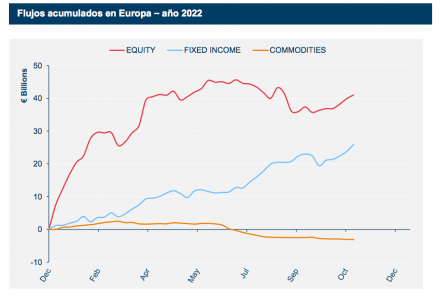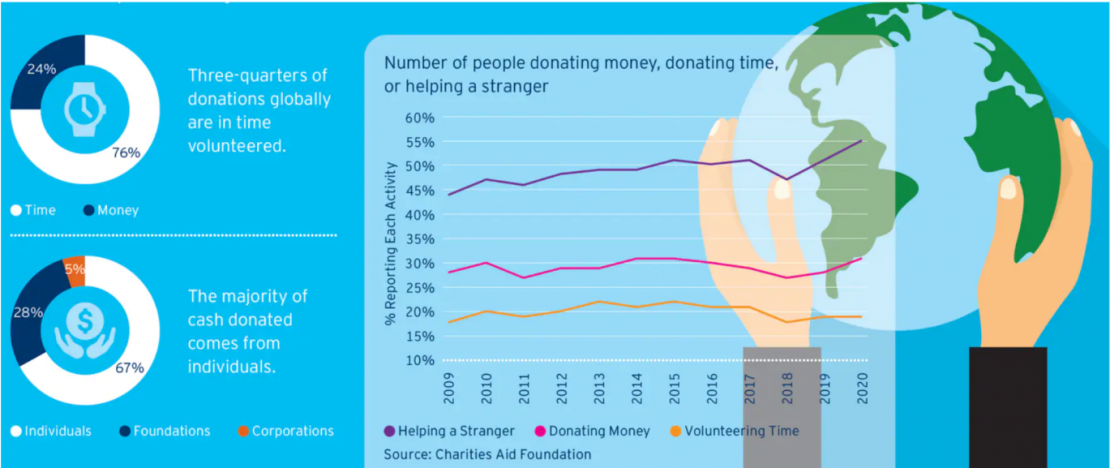Los flujos de entrada a ETFs globales en noviembre se ralentizaron
| Por Beatriz Zúñiga | 0 Comentarios

Los ETFs globales captaron 72.700 millones de euros en noviembre, lo que supone un descenso respecto a los 111.200 millones del mes pasado. Según los últimos datos publicados por Amundi, el mercado estadounidense de ETFs acaparó el 80% de los flujos, sumando activos por valor de 58.300 millones de euros, mientras que el mercado europeo de ETFs UCITS ganó 14.900 millones de euros el mes pasado. Mientras que el mercado asiático de ETFs registró salidas netas de 518 millones de euros.
Según explica la gestora en su informe mensual, manteniendo la tendencia de los últimos meses, la renta variable fue el activo más favorecido, con 42.700 millones de euros, siendo Norteamérica la zona de producto más popular, con 14.200 millones de euros. “Los inversores estadounidenses acapararon la mayor parte de los flujos totales de renta variable, añadiendo 32.800 millones de euros a esta clase de activos, mientras que los inversores europeos asignaron 6.600 millones de euros y los asiáticos 3.400 millones de euros”, indican.
Por su parte, la renta fija sumó 31.300 millones de euros en noviembre; los ETF registrados en EE.UU., 26.800 millones, y los ETF UCITS europeos, 8.500 millones. Los ETFs en Asia registraron flujos negativos por valor de 3.900 millones de euros. La gestora comenta que la deuda corporativa fue la clase de activos más popular, con 17.900 millones de euros, mientras que los inversores invirtieron 11.400 millones de euros en bonos soberanos.
Flujos europeos
Si ponemos el foco en Europa, se observa que, a diferencia de EE.UU., los ETFs UCITS de renta variable europeos captaron menos que los de renta fija. “Este mes se produjo una fuerte recuperación de los índices de renta variable global, con una ganancia para esta clase de activo de 4.300 millones de euros en noviembre. Los inversores también asignaron 2.700 millones de euros a la renta variable norteamericana, mientras que la renta variable japonesa sumó 1.300 millones de euros”, explican desde Amundi.
Un dato llamativo, dentro de esta tendencia, es que la renta variable ESG continuó su tendencia positiva, sumando 3.600 millones de euros el mes pasado: la norteamericana ganó 1.200 millones de euros, lo que representa casi la mitad (44%) de la asignación a la región, y la japonesa recibió una asignación de 1.100 millones de euros, la mayor parte de esta asignación regional.
En el caso de la renta fija, Amundi destaca que los ETF UCITS de renta fija europeos sumaron 8.500 millones de euros en noviembre, con la deuda corporativa sumando 5.700 millones de euros y los inversores asignando 2.000 millones de euros a la deuda pública. Los ETF de bonos corporativos de la eurozona añadieron 3.200 millones de euros en noviembre y los inversores también destinaron 1.900 millones de euros a bonos corporativos estadounidenses. “Los inversores retiraron 525 millones de euros de floting rates notes (FRN), pero se observó cierta recuperación del apetito por el riesgo, ya que los bonos high yield de la zona euro ganaron 281 millones de euros y los bonos high yield de Estados Unidos sumaron 225 millones de euros”, señalan desde la gestora.











